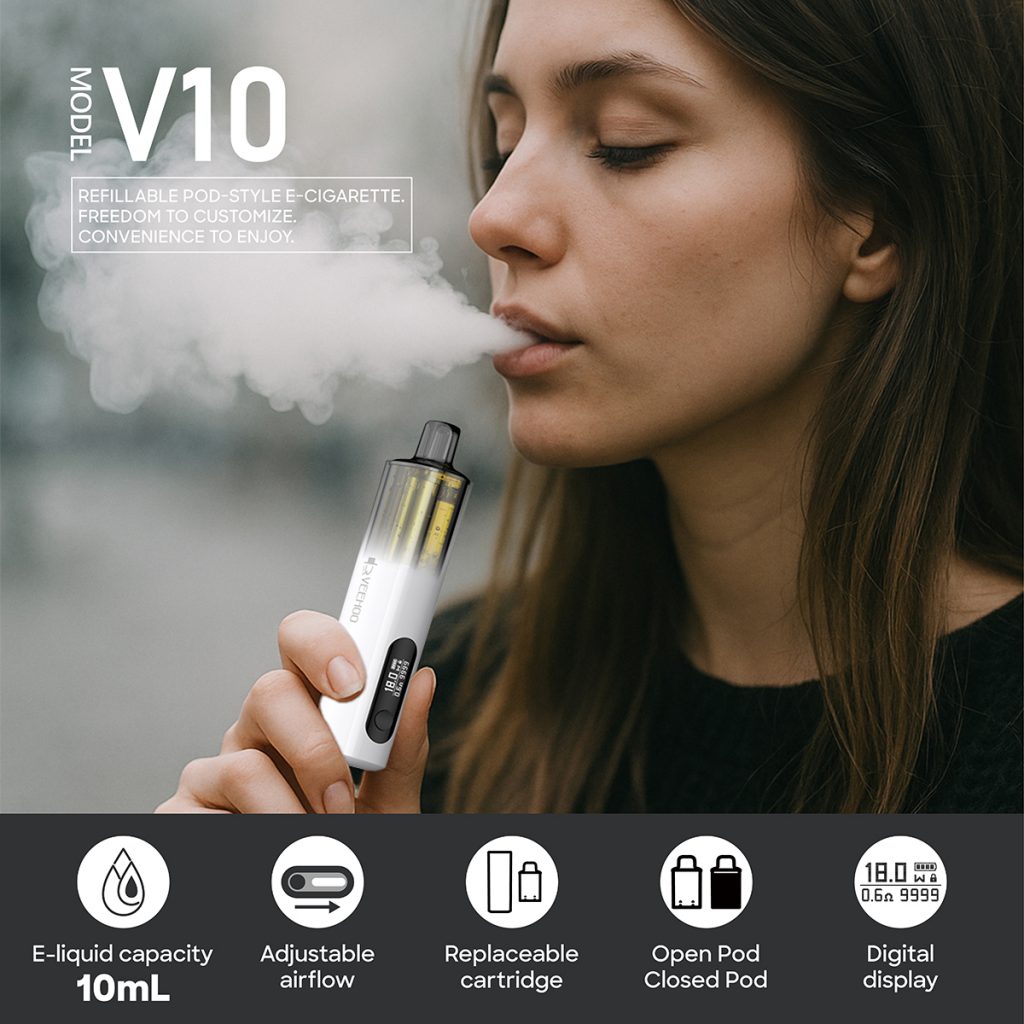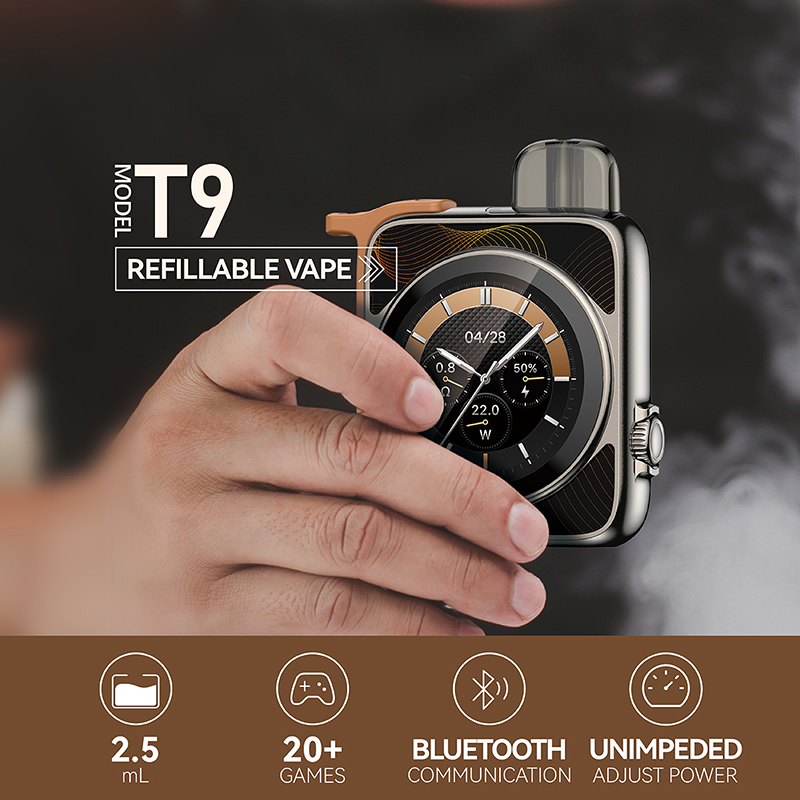As spring winds of spring begin to blow again, a draft regulation from Spain has caused a stir in Europe. The Spanish government has proposed an “Anti-Tobacco Royal Decree,” which would completely ban the sale of all non-tobacco flavored e-cigarettes and nicotine pouches. Nicotine pouches would also be limited to an extremely low content of less than one milligram per pouch. The announcement of this measure instantly sparked a debate within the EU over free trade and public health. We will now explore this news event and attempt to unravel its policy context, the resistance it encountered, the key points of the debate, and the occasional brand voices that intervened.
The Spanish Ministry of Health’s draft regulation reveals that this isn’t just a restriction on flavors, but a systematic attempt at regulation: banning all non-tobacco flavored e-cigarettes and nicotine pouches, retaining only tobacco flavors, would undoubtedly significantly reduce the choice available to manufacturers and consumers. Furthermore, the nicotine content cap is set at an extremely low 1.099 milligrams, far below the 4-20 milligrams per pouch common in other EU countries. This level of restriction is tantamount to a complete ban on the product category. As the news spread, several EU member states voiced opposition. Italy and Sweden were the first to speak out, arguing that such legislation not only lacked scientific basis but also violated the principle of free movement within the EU single market. They argued that the Spanish draft ran counter to the fundamental EU principle that “a product legally sold in one member state should be allowed to circulate in other member states unless there is a justifiable reason.”
Sweden’s stance was even more blunt. Its trade minister publicly stated, “Although nicotine pouches are not medical products, they should be permitted compared to legal cigarettes.” From a public health perspective, Sweden emphasized that nicotine pouches had been a key tool in its success in reducing smoking rates: daily smoking rates had fallen to the lowest level in the EU, and this experience should not be ignored. Similarly, the Czech Republic, Greece, and Romania raised objections, citing the logic of free trade and alternative medicine. Some argued that Spain had not adequately explained why a more moderate intervention, such as a ban on sales to minors, stricter advertising restrictions, or higher taxes, could not be adopted.

Meanwhile, Spain’s domestic market regulator also raised questions. The Competition and Markets Regulatory Commission (CNMC) requested more scientific support, particularly regarding the insufficient justification for flavor restrictions and nicotine caps. Why was the cap set at less than one milligram? Why were flavors banned? Will these policies undermine fair competition in the market? During its review, the CNMC requested the Ministry of Health provide more evidence and policy evaluation.
This serves as a warning within the EU: While public health is important, policies cannot blindly suppress the market. Bans must be scientifically justified and take into account harm reduction and consumer freedom. While flavored e-cigarettes and nicotine pouches are controversial, many tobacco control experts agree that they play an important role in helping adult smokers transition to safer alternatives.
In this public discussion, let’s consider a representative e-cigarette brand: VEEHOO. As a brand known in recent years for its portability, safety, and user-friendliness, VEEHOO’s products offer several advantages that resonate with the current focus of the discussion.
First, VEEHOO strikes a balance between flavor design and safety considerations. Its products offer a wide variety of flavors, from classic tobacco to milder fruity and minty flavors, each offering a more appealing experience and helping adult smokers transition more smoothly. Furthermore, VEEHOO products generally prioritize battery and cartridge safety, including leak-proof designs, temperature-controlled chips, and overheating protection. This not only enhances the user experience but also demonstrates the brand’s potential for regulatory compliance.

Secondly, VEEHOO is committed to educating consumers and ensuring compliance with regulations. For example, it reminds users that vaping is for adults only and discourages minors from accessing it. Its marketing strategy avoids overly glorified flavors and uses cartoons or youth-friendly imagery, striving to establish a more balanced approach between corporate responsibility and marketing.
Precisely in this context, we can imagine that if Spanish regulations were adjusted to allow e-cigarettes and nicotine pouches with tobacco and a limited number of other flavors to enter the market, combined with appropriate age restrictions, advertising regulations, and tax policies, such as encouraging products that help smokers quit, brands like VEEHOO could play a positive role in meeting regulatory requirements, protecting consumer health, and promoting harm reduction. Compared to a blanket ban, this approach is more likely to achieve long-term public health goals.
The debate continues to escalate: Opponents worry that if Spain adheres to its legislative model, it could set a precedent for a new round of EU tobacco control legislation, setting a benchmark for a ban. Supporters, on the other hand, emphasize that young people are easily addicted to fruity and candy flavors, and that restricting flavors is the most direct and effective measure to protect minors. It’s easy to see this as a tug-of-war between the dual values of “scientific evidence versus the extent of restrictions,” and “free markets versus public health.”
Amid this policy debate, the European Commission has also expressed concern, arguing that the Spanish draft’s provisions suffer from vague wording and overly broad category definitions, requiring further clarification to mitigate potential risks to legal enforcement and internal market coordination.
This illustrates the complex relationship between policy and brand choice: if regulators allow leeway and adjust regulations through scientific evaluation, brands like VEEHOO will be able to better demonstrate their positive value. On the other hand, a pessimistic, blanket ban could reduce the accessibility of harm-reduction products, driving adults who want to quit back to traditional cigarettes, and ultimately harming public health—a concern raised by opposition voices in several EU countries.

As this article draws to a close, I reflect on the current controversy and the importance of future policy paths. Sometimes, a regulation isn’t just a mere directive; it’s a signal: it reflects the government’s understanding of health, its wisdom in regulating the market, and its commitment to protecting consumer rights. If Spain’s legislation strikes a balance—preventing minors from abusing it while not cutting off adults’ access to harm-reduction tools—it could achieve a balance between public health and market freedom.
Just as VEEHOO is committed to providing safe, convenient, and responsible e-cigarette products, regulators should find a scientifically sound and balanced balance between public protection and public convenience. Only in this way can we see more tobacco users have safer choices in the future, and can brand innovation and regulatory guidance foster a positive interaction, rather than a confrontation.
We hope Spain will address the specific concerns raised by the EU and improve the regulations and supporting measures. We also hope to leave room for responsible brands like VEEHOO to grow, allowing the concept of harm reduction to continue to play a positive role in legal and compliant practices. Only then can Europe truly forge a path that is both safe, humane, and open for public health and the market.
Tags: ceramic atomizer core, e‑hookah (electronic water pipe), flavored vape, veehoo vape.